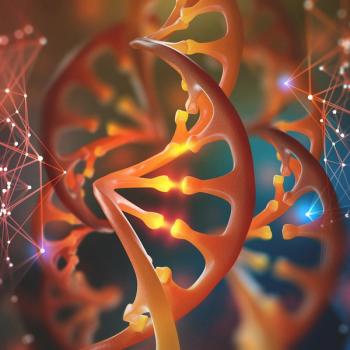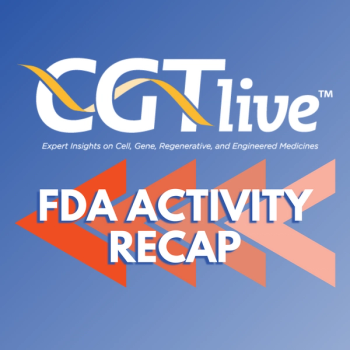
ASCO Studies Refine CAR T Cell Use
Several studies presented at the 2018 ASCO Annual Meeting helped further refine and inform treatment strategies for the budding class of CAR T-cell therapies, with a focus on predicting adverse events and optimizing efficacy.
Frederick L. Locke, MD
Several studies presented at the 2018 ASCO Annual Meeting helped further refine and inform treatment strategies for the budding class of chimeric antigen receptor (CAR) T-cell therapies, with a focus on predicting adverse events (AEs) and optimizing efficacy.
In durability findings from the ZUMA-1 and TRANSCEND studies,1,2 a 3-month cutoff was established for response, with more than 80% of responding patients continuing to stay in remission. Furthermore, findings from a phase I/II JCAR014 trial helped establish serum LDH levels pre-lymphodepletion as a signal of complete remission (CR) and a specific cytokine signature as a predictor of long-term outcomes.3,4
Other studies assessed patient populations for CAR T cell trials, to further establish treatment eligibility criteria. Although the number of prior therapies did not seem to impact outcomes, prior treatment with an anti-CD19 therapy could alter the CAR T cell manufacturing process, although the interpretation of data for this remains unclear.
In one scenario,5 the anti-CD19 therapy blinatumomab did not impact the manufacturing process for axicabtagene ciloleucel (axi-cel; Yescarta); however, in another dataset, more non-responders and CD19-negative relapses were experienced by patients when blinatumomab was administered prior to CAR T-cell therapy.6,7
Durability of Response
Adding to these efficacy focused findings, data from the ROCKET study, which looked to further establish a patient profile to help predict toxicity with CAR T-cell therapies, was also presented at the ASCO meeting.8 This analysis showed that patients with Philadelphia chromosome (Ph)-like genetic characteristics were highly unlikely to experience grade 4 or 5 cytokine release syndrome (CRS) or neurotoxicity.With the rapid develop of the CAR T-cell therapies, the durability of response and impact on long-term outcomes remains a question of interest, particularly as it factors into a value equation. As data from the clinical trials matures, it is becoming clear that patients experiencing a CR at month 3 to 6 are likely to experience a long-term remission.
After 15.4 months of follow-up in the pivotal phase II ZUMA-1 study,1 42% of responses to axi-cel remained ongoing. The median duration of response in the overall population was 11.1 months (95% CI, 3.9-not reached [NR]). In those with a CR, the median was not yet reached; however, patients achieving an initial partial response (PR) had a median duration of response of just 1.9 months (95% CI, 1.4-2.1).
The median time to response for axi-cel was 1 month, and nearly half (41%) of the PRs transitioned to CRs as late as 1-year post infusion. At the 15.4-month follow-up, all but 1 response was a CR.
The trial showed that if any type of response was ongoing at month 3 there was an 80% likelihood of a continued response at 1 year. For those with a response at month 3 (9 with a PR and 42 with a CR), the progression-free survival (PFS) rate remained 78% at 6, 9, and 12 months for those with a PR. In the CR group, the rates were 88%, 83%, and 79% at months 6, 9, and 12, respectively.
"Similar PFS was observed in patients who achieved PR or CR by month 3," said lead investigator Frederick L. Locke, MD, Moffitt Cancer Institute. "Response to axi-cel, either PR or CR, by 3 months may be prognostic for long-term remission."
These findings were echoed in the TRANSCEND trial examining lisocabtagene maraleucel (JCAR017; liso-cel) for patients with high-risk diffuse large B-cell lymphoma (DLBCL).2 In patients treated with a pivotal dose of liso-cel in the core group of patients, 88% who achieved a CR at 3 months continued to have a CR at month 6. Ninety-three percent of patients with a CR at 6 months continued to have an ongoing response.
With a median of 8 months of follow-up, the median duration of response in those achieving a CR was not yet reached (95% CI, 10.2-not evaluable [NE]). Those with a PR had a median duration of response of 2.1 months (95% CI, 1.0-5.0). In those achieving a CR, the 12-month overall survival (OS) rate was 89% (95% CI, 72%-96%). In those with a PR, the median OS was 10.3 months and the 1-year OS rate was 33% (95% CI, 9%-60%).
Predicting Depth of Response
"The duration of response curves flatten out after the 3-month point, in both the full and the core datasets," said lead investigator Jeremy S. Abramson, MD, MMSc, from the Massachusetts General Hospital Cancer Center. "Across dose levels, 93% of patients in CR at 6 months remained in response at data cutoff."Focus has also shifted toward predicting which patients will reach a CR, as it implies a longer-term remission, with some patients alive several years following infusion. Some baseline levels have emerged as predictive.
In a study looking at JCAR014 in 87 patients with relapsed/refractory B-cell malignancies,3 both pre-lymphodepletion serum LDH and peak CD8+ CAR T-cells were associated with better response and outcomes. In a multivariable logistic regression model, serum LDH levels prior to lymphodepletion correlated with CR (odds ratio [OR], 0.51; P = .03) and higher peak CD8+ CAR T cells were associated with better PFS (HR, 0.81; 95% CI, 0.68-0.95 P = .01).
Moreover, higher levels of the cytokines IL-7 and a lower day 0 level of IL-18 were associated with better overall outcomes. In patients who achieved a CR with high IL-7 and low IL-18 at day 0, the 24-month PFS rate was 100%.
In another study looking at CD19-positive B-cell malignancies,4 normal LDH levels along with platelet counts ≥100 prior to lymphodepletion was associated with better OS and disease-free survival (DFS). These patients, which were classified as good risk, had a 24-month DFS rate of 78% and 24-month OS rate of 86%. Regardless of risk, however, the analysis found that receiving a subsequent allogeneic stem cell transplant after CAR T cell therapy further improved outcomes.
Impact of Prior Blinatumomab
"In those who achieved MRD-negative CR, multivariable modeling identifies patients with lower LDH and higher platelet count prior to lymphodepletion who received Cy/Flu as having longer DFS," said lead investigator Kevin Hay, MD, from the Fred Hutchinson Cancer Research Center. "In patients with MRD-negative CR after CD19 CAR-T cells, allo-hematopoietic stem cell transplantation may improve DFS/OS. This potential benefit appears to exist in both good-risk and bad-risk patients identified from the multivariable modeling."Results were mixed on the impact of prior treatment with blinatumomab (Blincyto) on response to CAR T-cell therapies.5,6 An analysis from the ZUMA-3 trial5 suggested that prior treatment with blinatumomab did not significantly alter results whereas another study from the Children's Hospital of Philadelphia (CHOP)6 showed that prior blinatumomab resulted in more non-responses and higher CD19-negative relapses.
In the CHOP analysis,6 cases were reviewed for 150 patients ages 1 to 29 who were treated with CAR T-cell therapy. Overall, 8% of patients were nonresponders and 21.33% had CD19-negative relapses. Across the full population, 10.67% of patients had received prior blinatumomab. Thirteen percent of patients had diminished CD19 expression at baseline, which was more commonly seen following treatment with blinatumomab.
A higher proportion responders had not received a prior CD19-targeted therapy (approximately 60%) compared with blinatumomab-treated patients (approximately 30%). Additionally, more patients pretreated with a CD19-targeted agent had no response or a CD19-negative relapse (~60%) compared with non-pretreated patients (~28%).
In the ZUMA-3 trial,5 approximately half of 23 enrolled patients had received prior blinatumomab before treatment with axi-cel (also known as KTE-C19). The median age of patients was 34 years in the prior blinatumomab group and 49 years in the untreated arm. The median blast level was higher in the blinatumomab-pretreated patients versus untreated (85 vs 66). Additionally, a smaller overall dose was manufactured for the pretreated group.
Similar rates of CR and minimal residual disease (MRD)-negativity were achieved in those treated and untreated with prior blinatumomab, according to investigator Bijal D. Shah, MD. The CR rate in the prior blinatumomab group was 63% versus 80% in the untreated arm. MRD-negativity rates were 88% and 100%, favoring the naive group. There was no significant increase in grade ≥3 neurologic events between the groups.
Molecular Subtype Predicts AEs
"Prior blinatumomab did not impact the successful manufacture of KTE-C19. Clinical benefit was observed for patients with CD19+ relapsed/refractory ALL, regardless of prior blinatumomab," said Shah, from Moffitt Cancer Center. "Results support continued study of KTE-C19 as an effective treatment option for adult relapsed/refractory ALL, regardless of prior exposure to CD19-directed therapy."Research efforts have focused extensively on reducing the frequency and severity of AEs associated with CAR T-cell therapies, with a distinct focus on CRS and neurotoxicity. While treatment algorithms that include the use of the IL-6 inhibitor tocilizumab for CRS and corticosteroids for neurotoxicity have helped ameliorate some of these events, concerns are still present.
In a gene expression analysis of the ROCKET study, which explored JCAR015 for patients with relapsed/refractory B-ALL, 119 genes were differently expressed between those with grade 0/1 neurotoxicity and patients with grade 4/5 events. The grade 0/1 genes were found more commonly in Ph+ or Ph-like samples whereas grade 4/5 events occurred in non—Ph-like samples.
In the non-Ph+/like group, 107 of 124 patients (86.3%) had grade 0 to 3 neurotoxicity. Additionally, 17 of 124 patients (13.7%) had a grade 4 to 5 event. In the Ph-like or Ph+ group, all patients had neurotoxicity of grade 0 to 3 but none had a grade 4 to 5 event.
As a potential mechanism for these differences, CCL17, which is involved in trafficking and activation of regulatory and Th2 T-cells, was more commonly expressed in tumors from patients with grade 0 or 1 neurotoxicity.
"This identified a neurotoxicity-associated gene set that separates B-ALL based on molecular subtype," said presenter Jae H Park, MD, form Memorial Sloan Kettering Cancer Center. "These findings suggest that patient risk stratification by molecular subtype of disease and/or gene expression signature could play an important role in identifying patients at elevated risk for neurotoxicity."
References
- Locke FL, Ghobadi A, Jacobson CA, et al. Durability of response in ZUMA-1, the pivotal phase 2 study of axicabtagene ciloleucel (Axi-Cel) in patients (Pts) with refractory large B-cell lymphoma. J Clin Oncol. 2018;36 (suppl; abstr 3003).
- Abramson JS, Gordon LI, Palomba ML, et al. Updated safety and long term clinical outcomes in TRANSCEND NHL 001, pivotal trial of lisocabtagene maraleucel (JCAR017) in R/R aggressive NHL. J Clin Oncol. 2018;36 (suppl; abstr 7505)
- Pillai V, Rosenthal J, Muralidharan K, et al. Correlation of pre-CAR CD19 expression with responses and relapses after CAR T cell therapy. J Clin Oncol. 2018;36 (suppl; abstr 3051).
- Gauthier J, Hirayama AV, Hay K, et al. Factors associated with duration of response after CD19-specific CAR-T cell therapy for refractory/relapsed B-cell non-Hodgkin lymphoma. J Clin Oncol. 2018;36 (suppl; abstr 7576).
- Hay K, Gauthier J, Hirayama AV, et al. Factors impacting disease-free survival in adult B-cell ALL patients achieving MRD-negative CR after CD19 CAR-T cells. J Clin Oncol. 2018;36 (suppl; abstr 7005).
- Shah BD, Oluwole OO, Baer MR, et al. Outcomes of patients (pts) treated with prior blinatumomab (Blin) in ZUMA-3: A study of KTE-C19, an anti-CD19 chimeric antigen receptor (CAR) t cell therapy, in adult pts with relapsed/refractory acute lymphoblastic leukemia (R/R ALL). J Clin Oncol. 2018;36 (suppl; abstr 7006).
- Olson NE, Ragan SP, Ponko S, et al. Tumor gene signature associated with neurotoxicity in R/R B-ALL patients treated with JCAR015, a CD19-directed CAR T cell product. J Clin Oncol. 2018;36 (suppl; abstr 7007).
Newsletter
Stay at the forefront of cutting-edge science with CGT—your direct line to expert insights, breakthrough data, and real-time coverage of the latest advancements in cell and gene therapy.










































